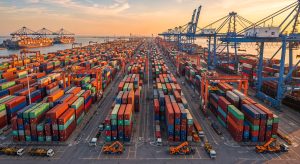The Real Cost of Poor Supplier Communication
Effective communication is the backbone of every successful global sourcing strategy. Yet for many companies, it is also one of the most overlooked risks. Misaligned expectations, unclear specifications, and cultural gaps frequently lead to production errors, delivery delays, and escalating costs. Although these issues often remain invisible until the damage is done, they account for a surprisingly large share of procurement disruptions.
A major source of miscommunication arises from differences in time zones and work cultures. When a critical question is asked at the end of a European or American workday, suppliers in Asia may not respond until the next day — turning a simple clarification into a 48–72-hour delay. Multiply this across dozens of low-volume suppliers, and a single project can quickly lose momentum.
Cultural nuances also matter. A drawing that seems complete in the U.S. or Europe might still leave room for interpretation in China, India, Vietnam, Thailand, or Mexico. Without local clarification, suppliers may move forward with incorrect assumptions, resulting in scrap, rework, and costly air shipments to recover deadlines. These preventable mistakes significantly impact the total cost of ownership and create instability along the supply chain.
The challenge grows when companies rely on many small, unmanaged suppliers. Communication styles vary widely. Some factories may require daily follow-ups; others may hesitate to raise concerns because they don’t want to disappoint the customer. As highlighted in our article on Why Supplier Consolidation Is the Key to Procurement Efficiency, fragmented supplier bases amplify the risk of miscommunication and administrative overload.
Clear, proactive communication is also essential for maintaining consistent quality. In How to Ensure Product Quality When Sourcing from Low-Cost Countries, we discuss how early alignment prevents quality deviations later in production. When suppliers fully understand technical specifications, packaging details, and compliance requirements, the entire production cycle becomes more stable.
Industry research supports this. According to McKinsey and Harvard Business Review, communication breakdowns are among the leading causes of supply chain failure, costing companies millions each year through delays, inefficient workflows, and reactive problem-solving. Effective communication is now considered a core operational capability—not a “nice to have.”
This is where having local teams makes all the difference. On-the-ground presence ensures real-time coordination, clearer understanding, and immediate action. EDS teams across China, India, Vietnam, Thailand, Mexico, Colombia, and the United States work directly with factories in their native language, confirm details on the production floor, and bridge cultural gaps that email exchanges simply cannot solve.
Strong communication is more than exchanging messages—it’s about preventing problems before they occur. That is the difference between sourcing that constantly puts out fires and sourcing that runs efficiently, reliably, and profitably.
And that is exactly what EDS delivers.
With nearly 40 years of experience, global offices, and multilingual teams, EDS International ensures that nothing gets lost in translation — guaranteeing clarity, speed, and consistent quality from the first inquiry to final delivery.
If you want fewer delays, fewer surprises, and more predictable supplier performance, EDS is your best global sourcing partner.








